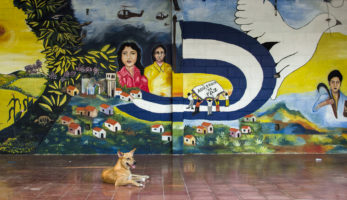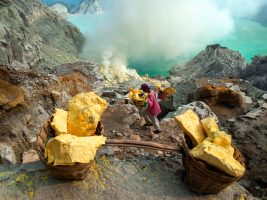Support Hidden Compass
Our articles are crafted by humans (not generative AI). Support Team Human with a contribution!
This story has been published in the 2023 Pathfinder Issue of Hidden Compass. While every story has a single byline, the issue is a collaborative effort. Storyteller proceeds from all patronage campaigns in this issue will go collectively to Team Tété on top of their article pay.
Arnaq Petersen warns us.
“You might get scared,” she chuckles, a smile on her face before she pushes a wooden mallet into her mouth, her cheeks expanding instantly.
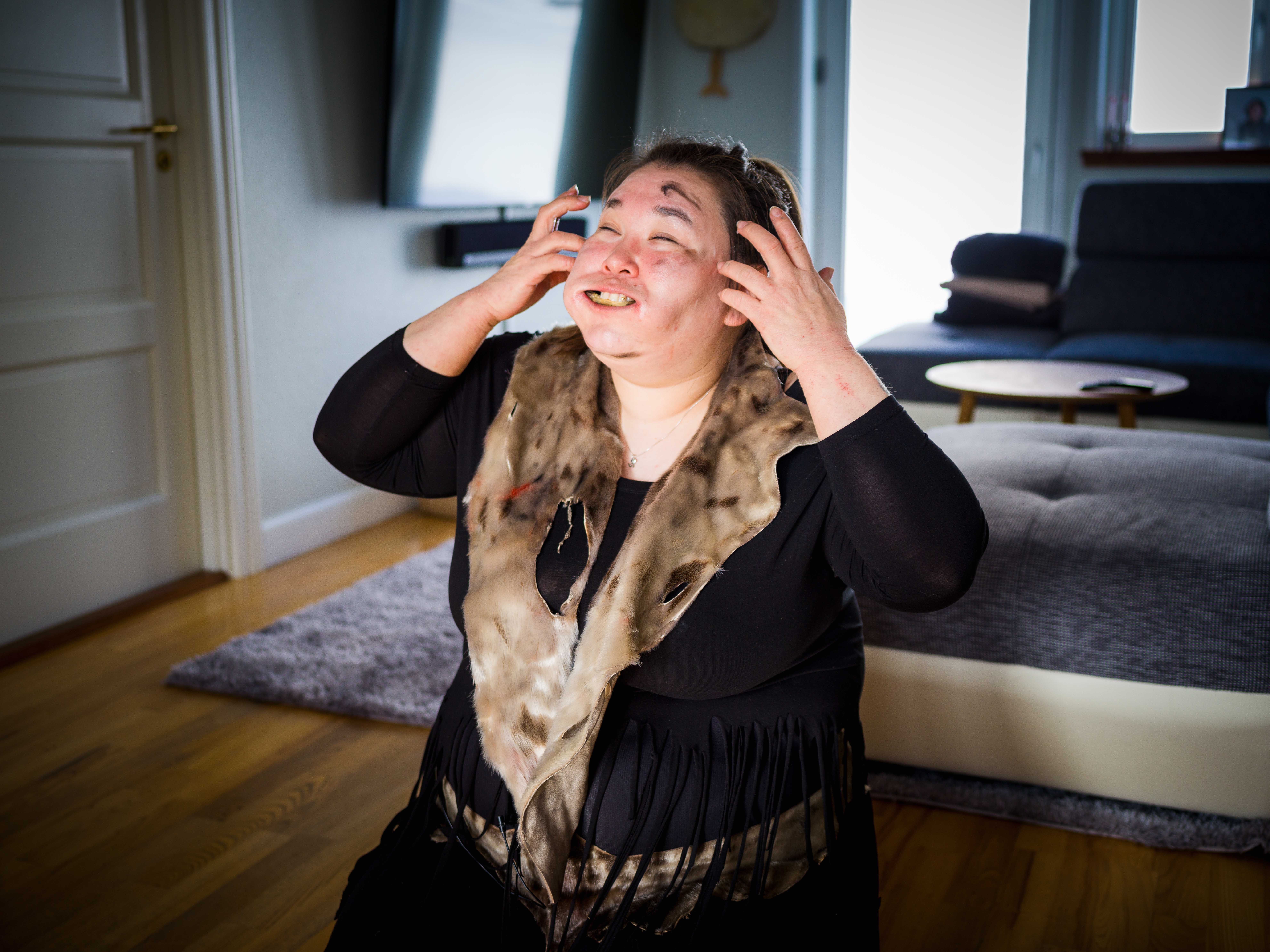
Sisimiut resident Arnaq Petersen poses with a mallet in her mouth, an implement used in uaajeerneq, one of the oldest forms of storytelling in the world. Photo: Lola Akinmade Åkerström.
She is perched on her knees in the middle of a spacious apartment with wide windows overlooking the snow-capped Nasaasaaq mountain range.
She adjusts and stretches her facial features before dipping her fingers into black paint and smearing it in blotches across her face. Then, she circles her protruding cheeks and nose with red paint, and carves lines through the black bits, symbolizing the final color in the trilogy — white.

Arnaq paints her face in preparation for the dance. The three colors, black, white, and red, each have symbolic meaning. Photo: Lola Akinmade Åkerström.
Arnaq closes her eyes as if dipping into a meditative trance. We wait, smiling.
She begins emitting low growls, humming deep in the back of her throat, eyes still tightly shut. When she suddenly opens them, our smiles drop.
The vivacious and bubbly Arnaq has transformed before us and seems to be channeling an otherworldly being.
This ancient form of storytelling is nothing short of hair-raising for an adult. We wonder what it would feel like to be a child witnessing this.
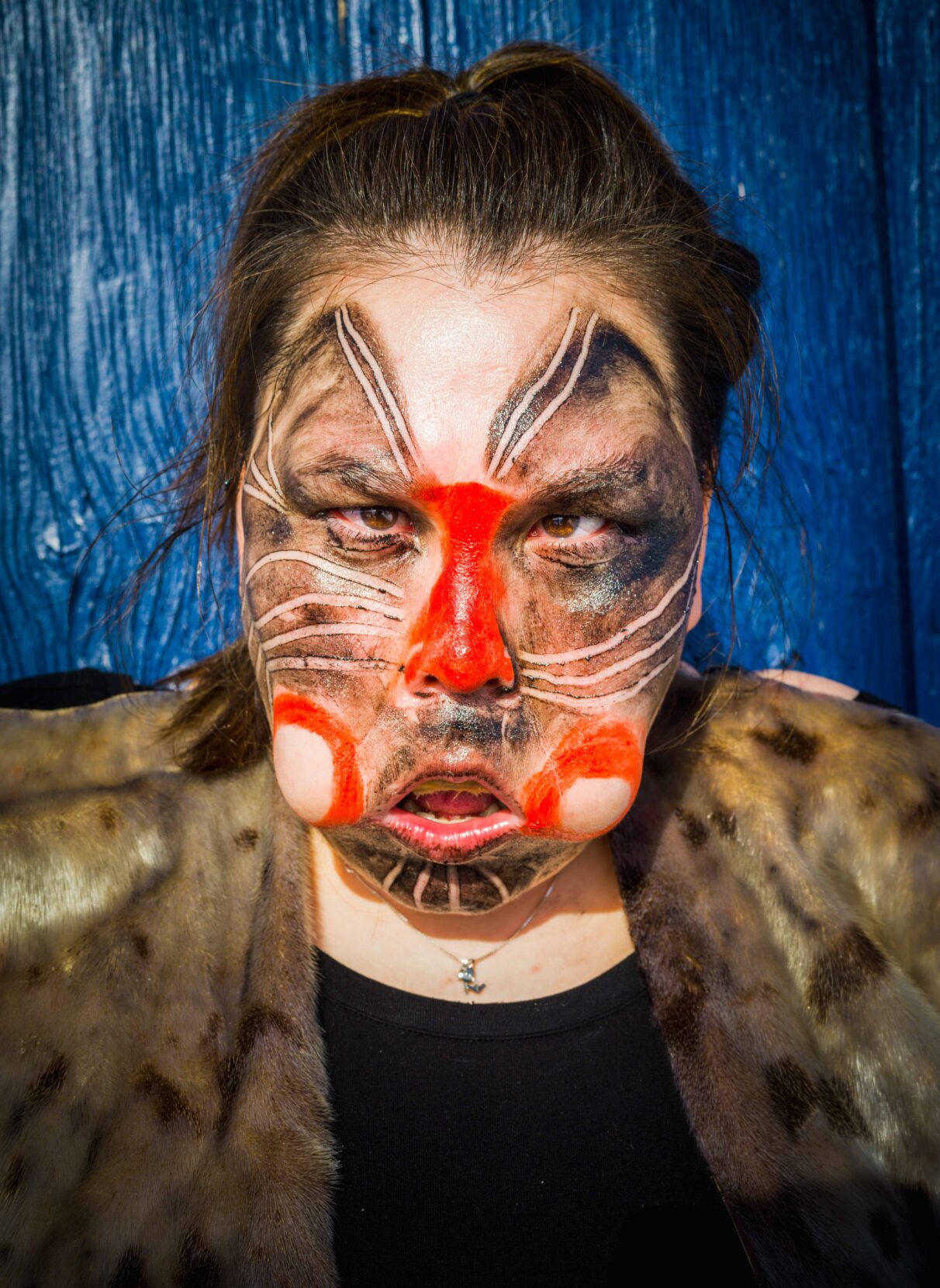
Uaajeerneq is extremely expressive, with the performance moving through emotions such as humor, anger, and pleasure. Photo: Lola Akinmade Åkerström.
One simply can’t turn away from a mask dancer. There is no choice but to feel.
~~
I am in Sisimiut, Greenland’s second-largest city (population 5,500), along with my two expedition teammates — soaking up all we can about Indigenous Inuit traditions. Togo-born explorer and author of An African in Greenland, Tété-Michel Kpomassie, led us here with his words. Now we are in search of people who remember him, showing the black-and-white photo of him we carry like a compass to anyone who will give us a few seconds of their time.
Earlier in the day, as we strolled along Sisimiut’s snow-covered roads stopping strangers, a small car screeched to a halt, and a middle-aged bespectacled woman with short hair popped out.
“It’s you!” she exclaims. Noo and I are the only two Black women we’ve seen wandering around Sisimiut, clearly out of place. “I recognize you because of the picture my sister sent me.” We remember the grinning selfie we’d sent to a woman named Ruth. “She told me you wanted to learn more about Mikkilersuaq!”
“Mikkilersuaq” — Michel the Giant.
Now a primary school teacher in her 60s, the woman, Augusta, would later tell us she remembered being a kindergartner in Upernavik and running to the school’s fence alongside her classmates whenever Tété walked by. They’d wave to him and watch him until he rounded a corner.
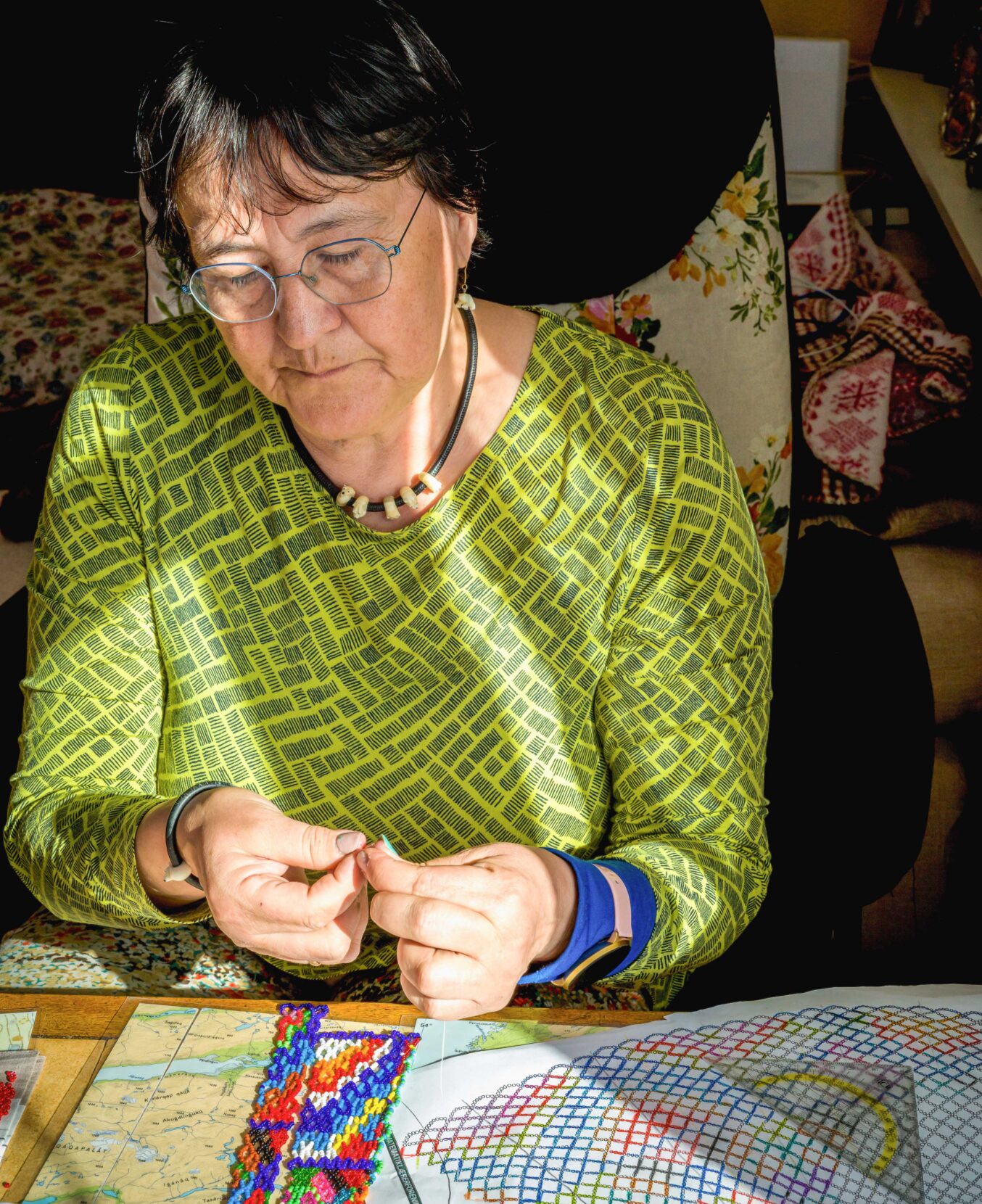
Augusta, a primary school teacher in Sisimiut, remembers waving to Teté when he visited Greenland during her childhood. Photo: Lola Akinmade Åkerström.
Mikkilersuaq was the nickname they gave Tété. In the years since we had read his book, we had assumed he earned the nickname because he towered over everyone at 5 feet 11 inches tall. But Augusta clarifies for us: “–ersuaq” is given to signify someone was great. “Not necessarily because of his height, but because he was seen as unique, special, and had a wonderful personality.”
I wonder if this label, seemingly devoid of any preconceived stereotypes, was one of the reasons Tété fell for Greenland as an African man. In the 1960s, it might have felt like a place where he could just exist.
When I think about my own experience living in another Arctic nation — Sweden — I’m intrigued by just how open Augusta and her family were. While my physicality as a Black woman and all the stereotypes crafted on my behalf precede me wherever I go in the Nordics, I pondered the original sentiment behind the name Mikkilersuaq. A name not tied to Tété’s physicality but to his character. Was there something in Augusta’s culture that allowed them to more freely accept the unknown — to accept Tété upon sight?
While researching and learning all we could about cultural traditions and Greenlandic history, we stumbled on one possible answer: uaajeerneq (pronounced “ooaaah-yernerk”) — the mask dance. And as Arnaq glides around us while maintaining eye contact throughout her performance, we’re entranced by one of the world’s oldest forms of storytelling, dating back roughly 4,000 years.
It’s a form of storytelling that was nearly lost forever.
~~
Deeply rooted in mythology and historically practiced by shamans and performers, the dance serves three purposes: to teach children how to control their fears in the face of ferocious entities and the unknown, to add levity and fun as clowns, and to symbolize courtship and sexuality the way a vibrantly feathered bird attracts a partner.
The vivacious and bubbly Arnaq has transformed before us and seems to be channeling an otherworldly being.
The three colors used also have meaning. Black represents magic and the uncertainty we face living in harsh Arctic climates. White depicts purity, bones, and a link to the spirits of ancestors. Red symbolizes the blood of life, love, sex, and emotions.
Born and raised in Qasigiannguit, 32-year-old Arnaq relocated to Sisimiut three years ago because her brother found better job opportunities there. With a culture deeply rooted in communal sustenance, her brother relocated his entire family, including his siblings.
Arnaq’s interest in mask dancing was piqued in 2016, prompting her to study the artform. She was trained as an actress and dancer by the National Theatre of Greenland in the capital city of Nuuk, and now travels all over the country and teaches workshops as well. She has appeared in several films wearing painted masks too. Today, uaajeerneq is often performed during solstice celebrations and mostly for entertainment purposes.
But for more than two centuries beginning in the 1700s, while Greenland was under the colonial rule of Denmark, mask dancing was essentially outlawed to introduce Christianity. Deep in remote eastern Greenland, however, which wasn’t colonized until 160 years after the rest of the country, the tradition was kept alive.
“In the fifties, there was an Inuit woman studying at the theater school in Copenhagen,” Arnaq shares. “All of a sudden, she started presenting both the drum and mask dance. Most people didn’t know about this, but she said she learned from her parents because her family had kept the tradition alive at home.”
And still, the form of mask dancing that exists today might not be exactly the form that was kept alive for centuries. In the 1970s, the mask dance was reinvented at the Tuukkaq Theater by a group of Greenlandic performers. Their resurrection is what is practiced today, and what Arnaq practices, but the intent of the dance remains the same.
~~
Arnaq needs more space to express herself, so we move outdoors. Her movements are an extension of the mask, arms flowing and tongue protruding against the majestic backdrop of snow flurries and mountains.
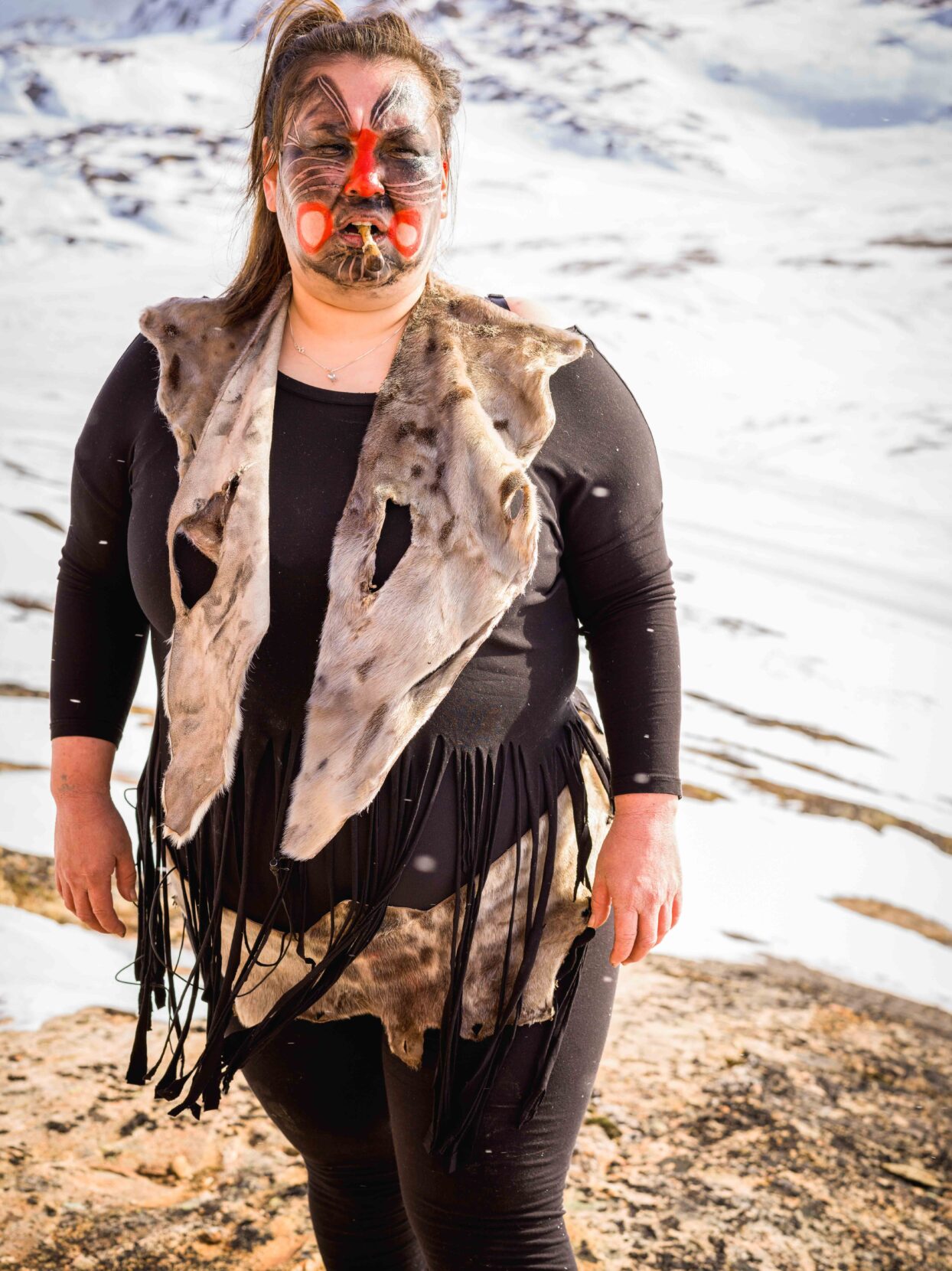
As Arnaq preforms for the expedition team outdoors, she is able to move freely in full expression of the dance. Photo: Lola Akinmade Åkerström.
She cycles through all three emotions. She contorts her face like a clown with exaggerated smiles and eye movements to make us chuckle. The next moment, her forehead dips into a frown with a piercing glare quickly snuffing out our laughter and replacing it with an uneasy fear. Then she pushes out her tongue before emitting a high-pitched, unsettling sound reminiscent of a woman in the throes of an intense orgasm.
This is the seductive part of uaajeerneq — the red circles on her cheeks coupled with her tongue representing a penis and testicles, and the red triangular splotch on her nose (sometimes worn on the forehead), representing a vagina.
It is mesmerizing to witness — beautiful and unsettling. This is a dichotomy even Arnaq herself feels watching other mask dancers. To this day, they frighten her.
“I’m always afraid to see a mask dancer,” she confesses with the smile that is fast becoming her signature. “I don’t like to watch it, but I love mask dancing. It reminds me that our ancestors have been through all these feelings.”
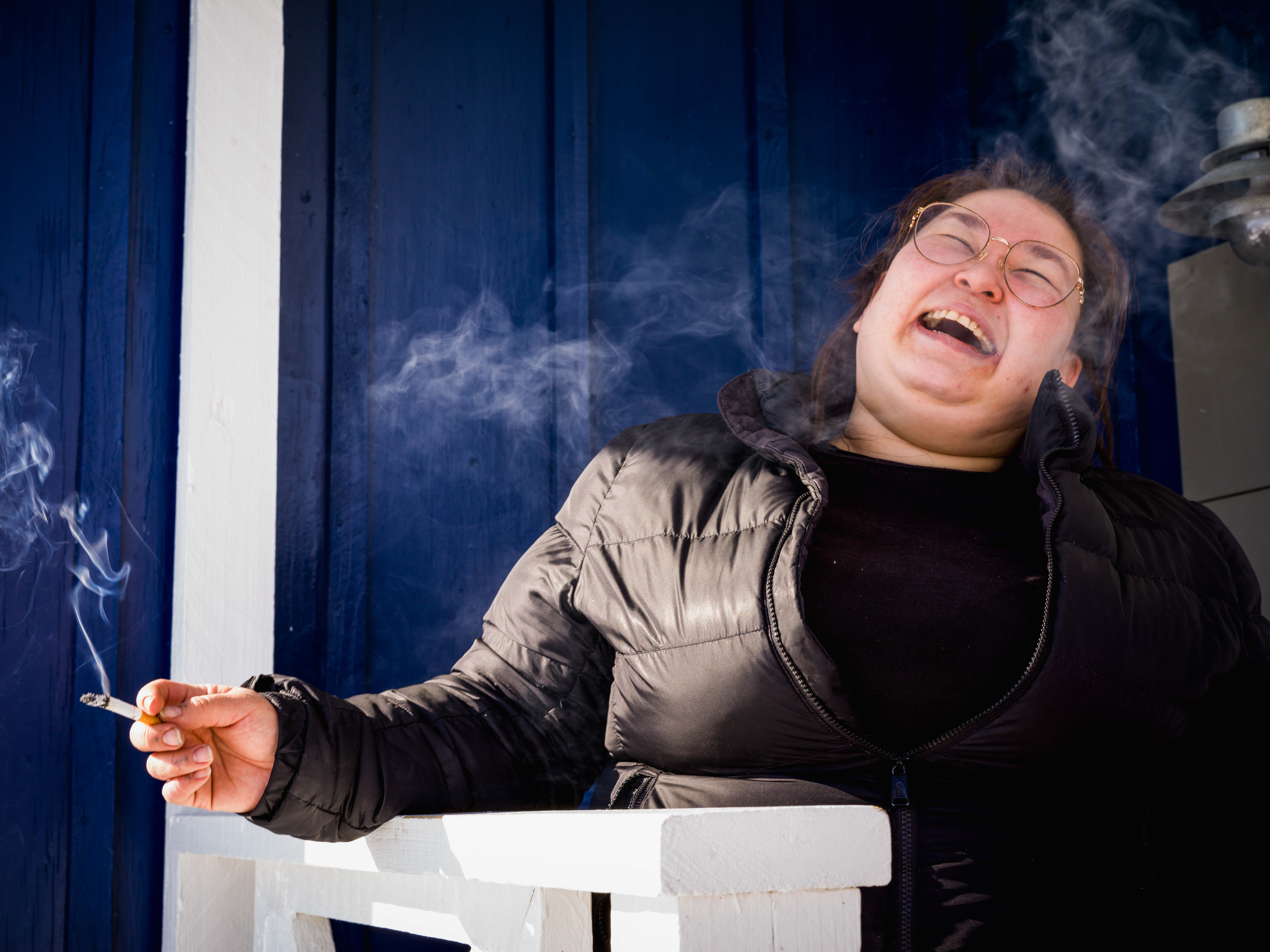
Arnaq herself feels fear when witnessing uaajeerneq, but finds that preforming it connects her to the emotions of her ancestors. Photo: Lola Akinmade Åkerström.
During one of the first shows she performed in her hometown of Qasigiannguit, she recalls everyone being transfixed. When she was done performing at the local theater, the entire audience got up and started chanting her name, “Arnaq! Arnaq! Arnaq!”
After witnessing this private ethereal performance, I understand why. It’s a mixture of sexual voyeurism, curiosity, and transfixation. Like a deer in headlights, one simply can’t turn away from a mask dancer. There is no choice but to feel completely exposed and vulnerable in the face of its performance.
Perhaps it’s that acceptance of vulnerability that prepared Augusta, her classmates, and her family to accept Tété all those decades ago. Because, at its core, isn’t vulnerability the basis for human connection — across cultures, color, and even continents?
Lola Akinmade Åkerström
Lola Akinmade Åkerström is the 2023 Pathfinder Prize-winning expedition leader and cinematic art director for “In Tété’s Footsteps: A Cultural Expedition in Greenland.”

